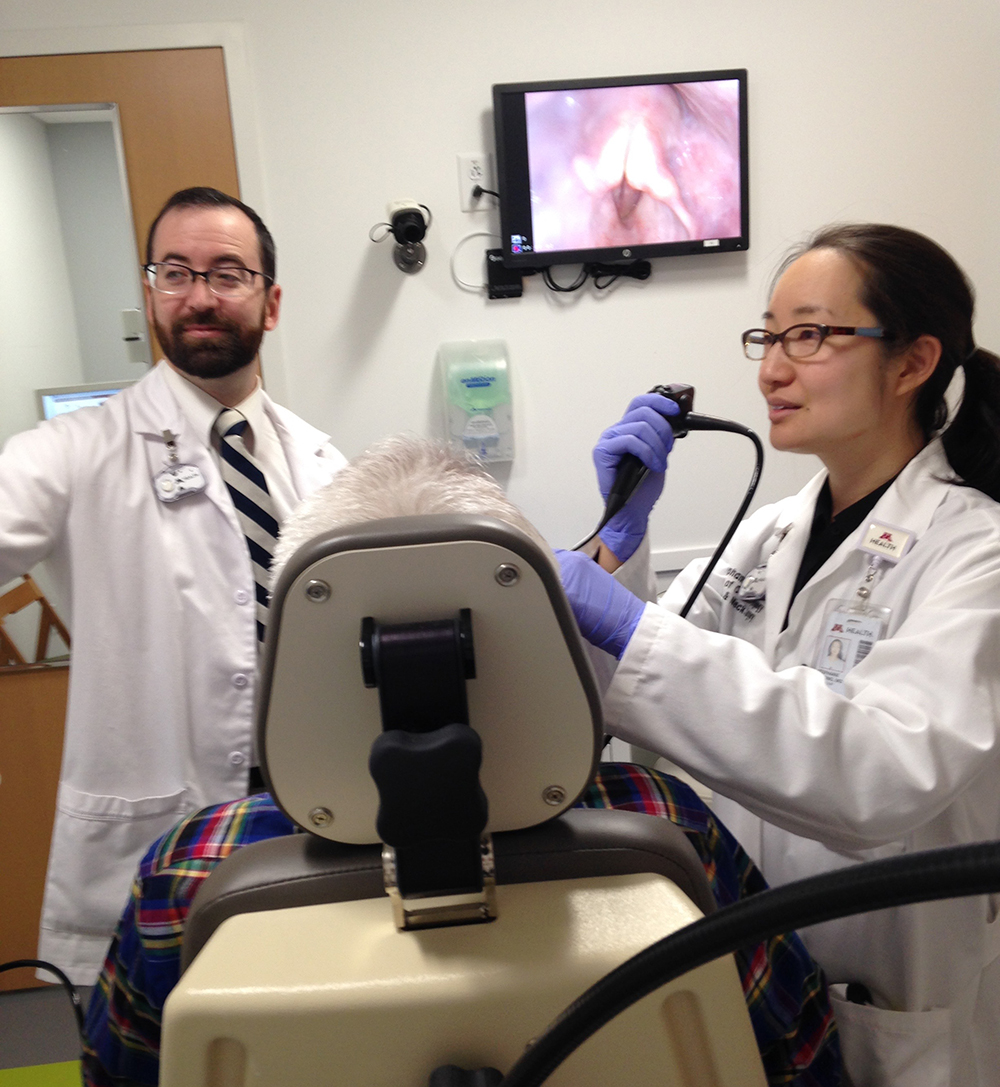The Evaluation Process
At the Lions Voice Clinic, your voice evaluation is interdisciplinary, that is, the laryngologist and speech-language pathologist evaluate you together, at the same time. It starts the moment the visit starts. Your team gains important information from watching you speak, breath, sing, and swallow. We discuss the problem thoroughly with you, gathering information about the history of the problem, and your complaints and needs. This also includes a thorough examination of the ear, nose, and throat.
The Laryngeal Examination

The examination of the larynx is a fundamental part of the evaluation. This may be done in a number of ways. Most often, we video-record the examination of the larynx, in order to have a document of the results. Also, it is often desirable to have you view your own larynx in action, in order to better understand your voice disorder.
The examination may be done with either flexible or rigid endoscopy, or both. The flexible endoscope is passed through the nose and into the throat, allowing a full view of the larynx in action. The rigid endoscope is inserted into the mouth and straight back, functioning like a submarine periscope to view the vocal folds. The rigid endoscope is larger, offering a larger, brighter view of the larynx. However, the flexible endoscope, being passed through the nose, allows you to talk and sing during the procedure. This is vital in assessing the function of the vocal mechanism.
Clarification
An endoscope consists of a lens at the end of fiberoptic cables that carry light to the dark insides of the human body. The image is viewed through an eyepiece. In the Lions Voice Clinic, the endoscope is attached to a video camera. This allows the image to be projected onto a video monitor during the exam, and video recorded for replay. You can use your phone to take a picture or a video of the recording for your records.
An additional feature of the endoscopic exam is called stroboscopy. In this case, the light carried through the fiberoptic cables is a strobe light, which shines intermittently on the vibrating vocal folds. For this procedure, you also hold a microphone on your cheek or your neck. The vocal folds vibrate anywhere from 80 to 1500 times per second; the faster the vibration, the higher the pitch of the voice (see vocal fold vibration and pitch in our About the Voice section). These vibrations are so fast, they can only be seen as a blur. But when the strobe light shines intermittently on the vibrating vocal folds, they look as if they're vibrating in slow motion. This allows an evaluation of the nature of the vibration, which is crucial to understanding many abnormalities of the vocal sound. In the Lions Voice Clinic, we use stroboscopy to assess voice disorders.
Regardless of who performs your endoscopic examination (a speech-language pathologist or a laryngologist), we always review your examination together, along with you. Determining the cause of the problem and the treatment plan is a team event. The nature of the disorder determines what kind of treatment is recommended. Depending on the way you scheduled your appointment, you may see just a Speech-Language Pathologist. He or she will refer you to one of our laryngologists if appropriate.
Address
M Health Fairview Clinics and Surgery Center - Minneapolis
909 Fulton St. SE
Minneapolis, MN 55455